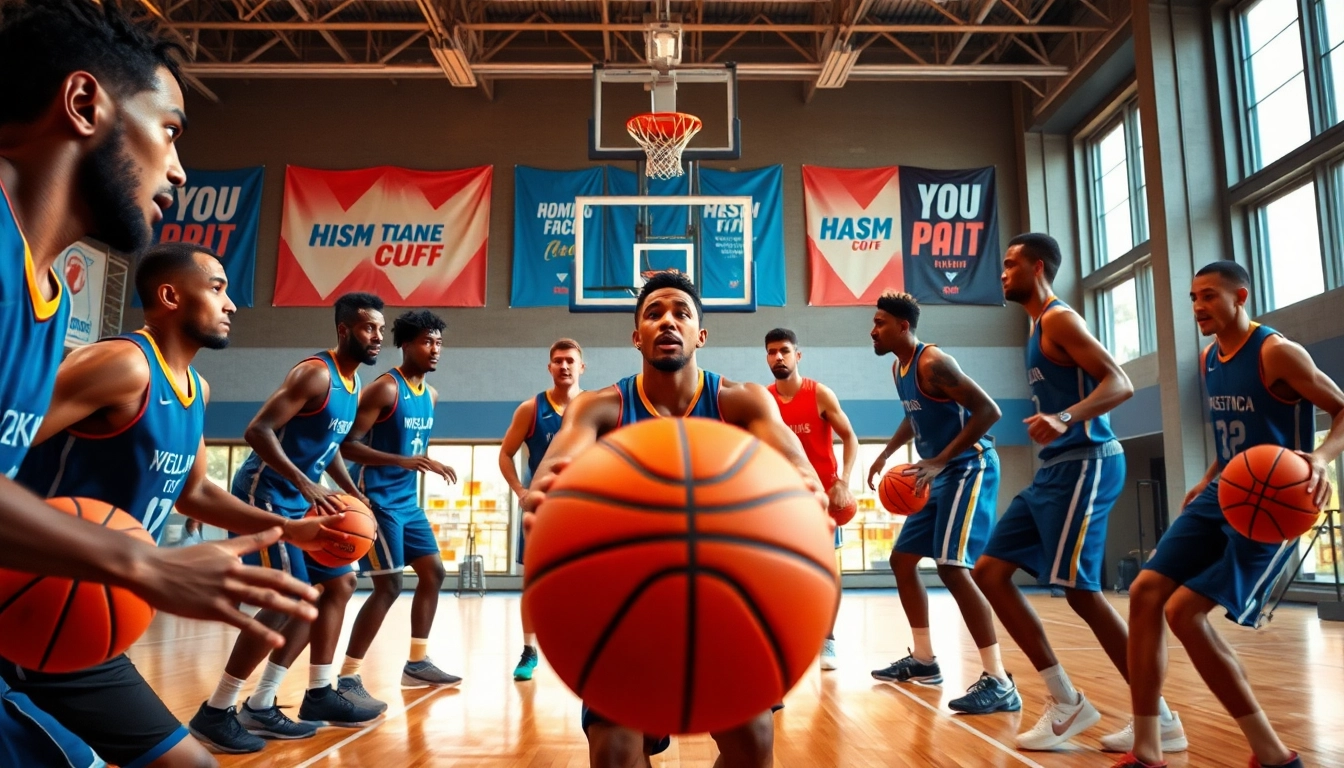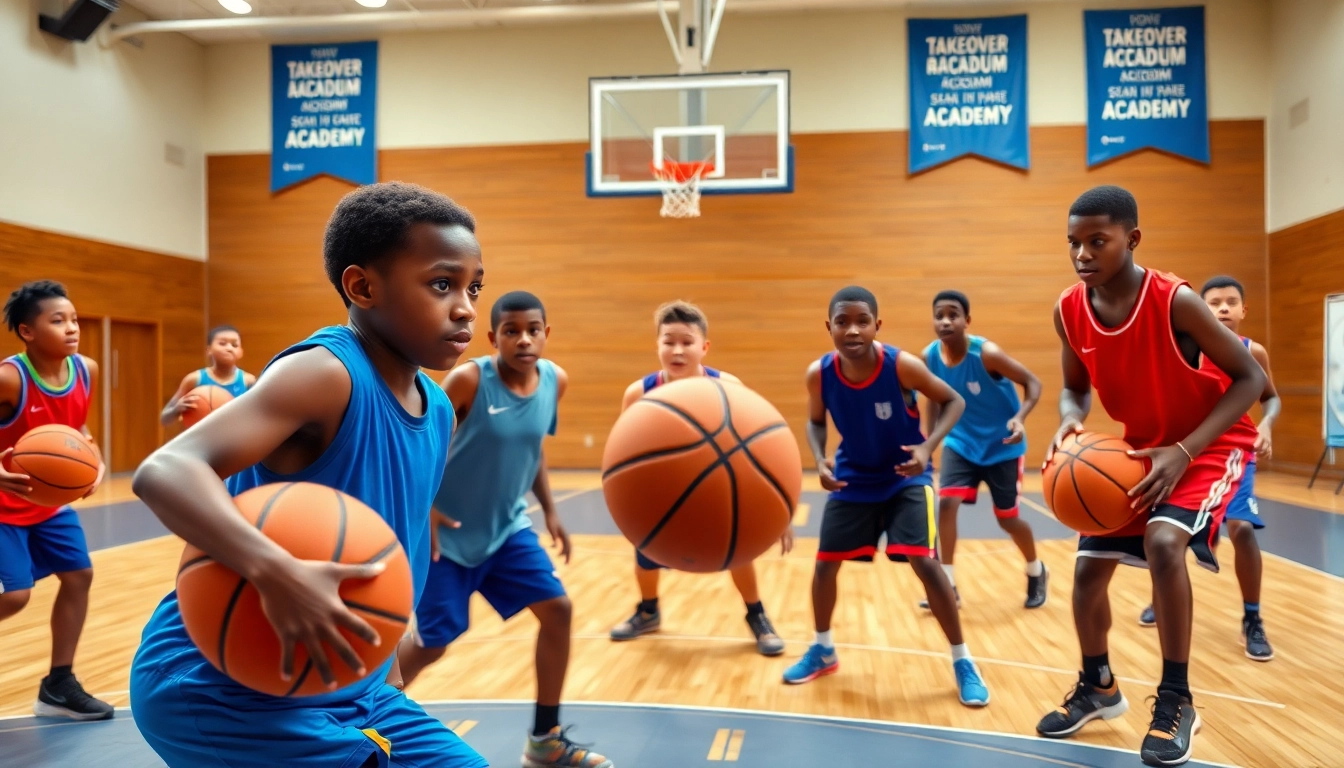Top-rated Basketball Training Programs to Elevate Your Game
Understanding the Importance of Basketball Training Programs
Basketball is more than just a game; it’s a passion that requires dedicated skills, conditioning, and strategy. Given the level of competition at various stages—be it youth leagues, high school teams, or professional courts—players are increasingly turning to structured training programs to hone their abilities. Investing time and effort in best basketball training programs can be a pivotal step towards enhancing both individual and team performance. Understanding the significance of these programs sheds light on why they are essential for players at all levels.
Why Choose the Best Basketball Training Programs
Choosing the best training program is crucial for several reasons:
- Expert Guidance: Programs often feature experienced coaches who understand the nuances of the game, offering insights that self-training cannot match.
- Personalized Approach: Many top programs assess the strengths and weaknesses of players, allowing for tailored training regimens that focus on areas requiring improvement.
- Structured Learning: Well-designed programs inculcate discipline, ensuring players follow a systematic approach to skill development.
- Focus on Fundamentals: Every successful player has a strong foundation. Training programs emphasize essential skills such as shooting form, ball handling, and defensive techniques.
Common Goals for Aspiring Basketball Players
Aspiring players typically have specific goals that drive their participation in training programs, including:
- Aiming to improve shooting accuracy and ball-handling skills.
- Building physical strength and cardiovascular endurance.
- Enhancing tactical understanding of the game.
- Preparing for higher levels of competition, such as college or professional leagues.
How Training Programs Impact Performance
Training programs not only refine skills but also have profound effects on players’ overall performance. Studies highlight that specific training regimens can lead to measurable improvements in:
- Skill Proficiency: Regular practice under the supervision of coaches leads to faster acquisition of new skills.
- Physical Fitness: Customized conditioning programs improve agility, speed, and strength, contributing to overall game performance.
- Mental Toughness: Consistent training routines help players develop resilience, a key component in high-pressure game situations.
Different Types of Basketball Training Programs
The landscape of basketball training is diverse, with various programs catering to different needs of players. Here’s a breakdown of the most common types:
Skill Development and Technique Enhancement
Skill development training focuses primarily on enhancing individual abilities. These programs often cover:
- Shooting mechanics – Proper shooting stance, follow-through, and shot selection.
- Ball handling – Dribbling techniques, crossover moves, and control under pressure.
- Defensive skills – Stance, footwork, and positioning against opponents.
Programs such as “Shooting School” offered by various academies focus exclusively on improving shooting accuracy through drills and video analysis.
Strength and Conditioning Regimens
Physical fitness is integral for basketball athletes. Strength and conditioning programs are designed to enhance:
- Muscle strength: Programs typically incorporate weight training and resistance workouts.
- Endurance: High-intensity interval training (HIIT) is often featured to boost heart health and stamina.
- Flexibility: Stretching and mobility drills help in injury prevention and recovery.
Institutions such as Elite Performance Centers offer structured programs focusing on athletic improvement through personalized fitness regimens.
Team-based vs Individual Training Approaches
Training can be categorized into team-based and individual approaches:
- Team-based Training: Focused on developing team dynamics through scrimmages, coordination drills, and tactical play.
- Individual Training: Allows players to work on specific skills without the pressure of team settings. Coaches can provide direct feedback and concentrated practice.
Combining both approaches can yield comprehensive development, preparing players for the nuances of competitive play.
Finding the Right Fit: Evaluating Basketball Training Programs
When selecting a basketball training program, players and parents should consider multiple factors to ensure they find the right match:
Credentials and Experience of Coaches
The quality of coaching can significantly influence the effectiveness of a training program. Players should look for:
- Coaches with experience: Look for coaches who have played or coached at high levels.
- Certifications: Credentials from reputable institutions can indicate solid training methods.
Additionally, positive feedback from past trainees can provide insights into a coach’s effectiveness.
Program Structure and Content Focus
Different programs may vary significantly in focus. Assessing these aspects can help in making an informed decision:
- Curriculum: Look for structured programs that offer a blend of skill work, scrimmages, and conditioning.
- Duration and Frequency: Programs that offer regular sessions tend to yield better results.
Success Stories and Player Testimonials
Evaluating feedback from former participants can reveal potential program strengths or weaknesses. Look for:
- Testimonials: Direct quotes from players highlighting their experiences.
- Success Rates: Data on how many players progressed to the next level, such as high school or college basketball.
Innovative Trends in Basketball Training
The world of basketball training continues to evolve, influenced by technological advancements and an evolving understanding of athlete development. Here’s a look at some current trends:
The Role of Technology in Training Programs
Technological integration has made its way into training routines, offering tools such as:
- Video analysis: Coaches and players use video tools to break down plays and movements, enhancing understanding.
- Performance tracking software: Programs monitor player metrics to personalize workouts, track progress, and highlight areas needing focus.
Technologies such as the ShotTracker and DribbleUp are becoming common in training settings, enabling athletes to gauge their performance accurately.
Online vs In-person Basketball Training
The rise of online training programs has changed how players access coaching:
- Online Training: Offers flexibility allowing players to engage in remote training sessions, often with video demonstrations and interactive feedback.
- In-person Training: Provides immediate feedback from coaches, adaptive drills based on real-time performance.
A combination of both can be beneficial, supplying accessibility and personalized coaching.
Integrating Mental Conditioning in Training
Mental conditioning has gained recognition as a crucial element in athletic training. Programs increasingly incorporate:
- Mental Skills Training: Exercises designed to enhance concentration, visualization, and composure under pressure.
- Sports Psychology: Access to professionals who can provide mental strategies and psychological resilience techniques.
Coaches emphasize the importance of mental preparation alongside physical training, recognizing that mental strength can significantly affect performance during critical game moments.
Maximizing Your Training: Tips for Players
To truly benefit from any basketball training program, players should adopt strategies to maximize their outcomes:
Creating a Personalized Training Schedule
Setting a routine that aligns with personal goals is essential:
- Assess your goals: Identify specific skills or areas that need more attention.
- Consistency is key: Regular, scheduled workouts help in building habits and retaining skills.
Setting Achievable Milestones
Aiming for incremental progress will provide motivation and track growth:
- SMART Goals: Ensure goals are Specific, Measurable, Achievable, Relevant, and Timely.
- Celebrate small wins: Recognizing improvements can bolster confidence and drive continued effort.
Nutrition and Recovery for Peak Performance
Optimal performance on the court is complemented by proper nutrition and recovery practices, including:
- Balanced Diet: A diet rich in carbohydrates, proteins, and healthy fats supports recovery and energy levels.
- Hydration: Maintaining hydration prevents fatigue and improves overall performance.
- Rest: Sufficient sleep and rest days are vital for muscle repair and mental recovery.
Combining these aspects with a dedicated training program creates a holistic approach leading to greater success on the court.














Post Comment